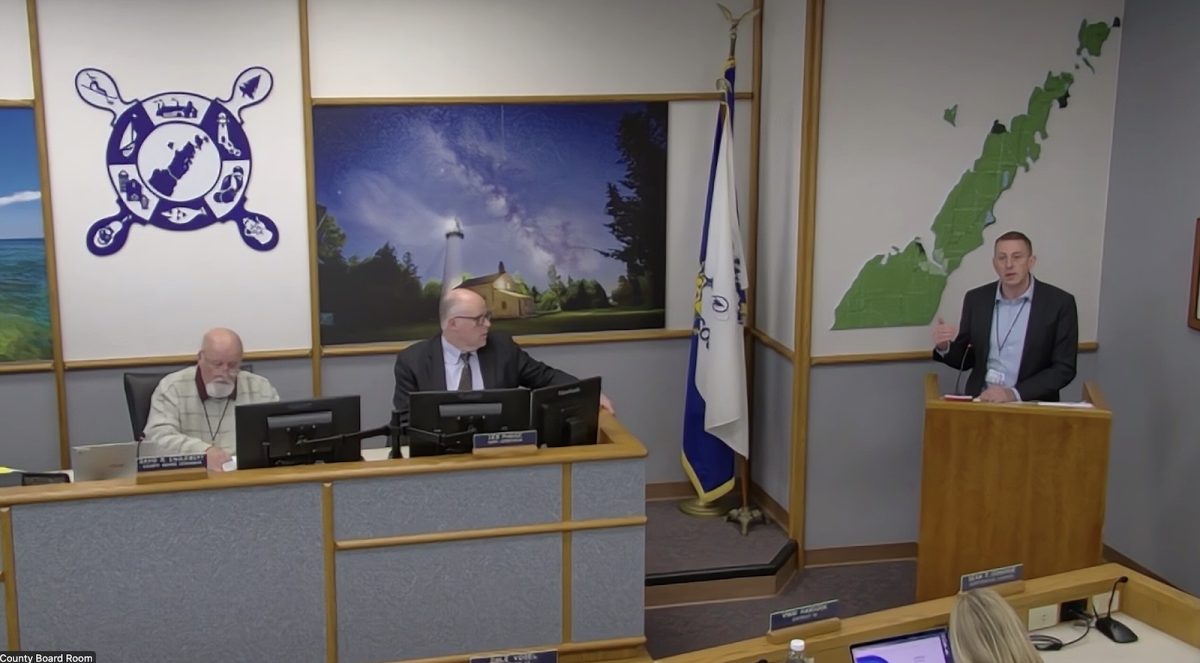Door County Drug Treatment Court is struggling due to staff vacancies and is not accepting new participants until vacancies are filled, Supervisor Nissa Norton alerted the Door County Board of Supervisors during the new business section of its April meeting. Norton is the supervisor for District 12, representing Sturgeon Bay. She also serves on the health and human services committee.
There are 13 people currently enrolled in the program, according to information provided by County Corporation Counsel Sean Donohue, and three staff vacancies. The Alcohol and Other Drug Abuse coordinator position, the AODA therapist and the court services coordinator positions are all vacant. In January 2025, AODA Coordinator Mallory Mahaffey resigned. The position was created in February 2024 when HHS restructured its operational organization.
The department is reevaluating its needs and plans to combine the AODA coordinator position with the Behavioral Health Coordinator position, HHS Director Joe Krebsbach said, according to Treatment Court Steering Committee minutes. The Behavioral Health Coordinator position is also vacant. The department posted the job earlier this year and is actively recruiting to fill it, according to Krebsbach.
In the meantime, Krebsbach is managing Drug Treatment Court needs. He did not have any comment “as we are still in a wait and see,” he wrote in a follow-up email. As to whether the Drug Treatment Court program is in danger of being shut down, he said the county is “well over a month out on making that decision.”
Krebsbach confirmed the program is not accepting new participants, but is continuing with the individuals already enrolled.
“We aren’t going to make them suffer, you know?” Norton said in a phone call on April 18. “They’re just basically scraping by to get those people through without a major change.”
The Wisconsin government, which signed a Memorandum of Understanding with the court at its inception, wants Door County to continue the program, according to Norton, as it is 1 of 33 specific adult drug court programs in the state.
Door County’s drug treatment court started in December 2020, after a few years of trying to get it off the ground, Knock reported in 2023. According to the most current information provided by Donohue, the program has had 23 total enrollees to date. Of the 10 who were discharged from the program, five successfully graduated and “continue to do well,” Donohue said.
According to Wisconsin Bureau of Justice Information and Analysis statistics, as of July 2024, five enrollees have been terminated from the program and one was granted an administrative leave.
There have been no return or repeat enrollees, Donohue said.
Along with the 90 other treatment court and diversion programs of various kinds throughout the state, Door County gets some of the court’s operating costs funded through a Treatment Alternatives and Diversion Program grant.
Established in 2005, TAD grants are funded on a five-year cycle to provide treatment and diversion services to non-violent individuals. Substance abuse and substance use disorder must be factors in their criminal activity to be considered for services.
The program was awarded $178,476.29 in TAD funds for 2024. Other funding for the Drug Treatment Court in 2024 consisted of the following estimated amounts:
- Opioid settlement money – $44,000
- Contracted service payments – $83,240
- Private insurance payouts – $6,700
- County tax levy – $70,000
The funding is there for the program, Norton said. “But if we can’t staff it, what do you do?”
To proclaim or not to proclaim
What do clean beaches, youth government, older Americans, migratory birds, travel and tourism, and trails have in common? They are all part of various proclamations the Door County Board of Supervisors has approved since 2001. Until April 15 this year, there was no official guidance as to how the board considers proclamation requests.
Proclamations are formal public declarations that can be issued at every level of government. At the county level, they are typically used to recognize significant events or individuals within the county. For example, Door County issues proclamations in the form of memoriams when someone who served in public office dies.
Proclamations do not create or enforce policy, and are mostly symbolic. At a January administrative committee meeting, County Corporation Counsel Sean Donohue questioned the purpose of county proclamations and advised the committee to develop guidelines for them.
“Proclamations are feel good, but do they provide a tangible benefit to county government?” he asked, according to administrative committee meeting minutes. Donohue also raised the question whether county board members and staff should be spending time preparing, reviewing and considering every proclamation proposed.
The administrative committee developed proclamation guideline language to be added to the county’s Rules of Order, and brought the draft to the county board for approval. The new rule was approved at the board of supervisors’ regular meeting on April 15 and states:
“To be considered by the Door County Board of Supervisors, a proclamation must be sponsored by the County Board Chairperson and directly impact the County’s programs, services, or budget. A proposed proclamation shall specify how it directly impacts the County’s programs, services, or budget. This rule excludes memoriams.”
Giving the board chairperson control over what proclamation proposals will be added to county board agendas provides a “gatekeeper,” according to Donohue. The second provision, that a proclamation directly impacts county programs, services or budget, will narrow down potential requests, “so we don’t get an Apple Juice Day or something,” he added.
Proclamations differ from resolutions, in that resolutions direct action, Donohue said. All proclamations must be passed as a resolution, but all resolutions are not necessarily proclamations, he explained.
Grant applications are one area a proclamation might be necessary in order to show government support and secure funding, he said, and some entities like the Department of Natural Resources have very specific requirements in that regard. If that is the case, the proclamation proposal should include that information, Donohue added.
Last spring, a proclamation request from local LBGTQIA+ organization Open Door Pride to make June Open Door Pride Month was not included on the board’s April 2024 agenda. At the April meeting, supervisors voted 8 in favor of and 10 against adding the request to the next month’s agenda for discussion and possible action.
Open Door Pride has yet to submit a request to the Door County board this year for a Pride month proclamation, according to Cathy Grier, the organization’s chair. The City of Sturgeon Bay, the Village of Sister Bay, and Baileys Harbor are issuing Pride month proclamations, as they have in the past, she said.
Supervisors had an opportunity to put the new rule regarding proclamations into practice right on the heels of its approval. A resolution titled “National Trails Day in Door County, June 7, 2025” was approved by the board at the April meeting. It qualified as a proclamation because it directly impacts county programs, budget, or services under the new rule, according to Donohue.
“Trail activities bring together friends, neighbors and family, enhance quality of life, boost tourism, build community and stimulate economic development in Door County,” reads part of the resolution.

